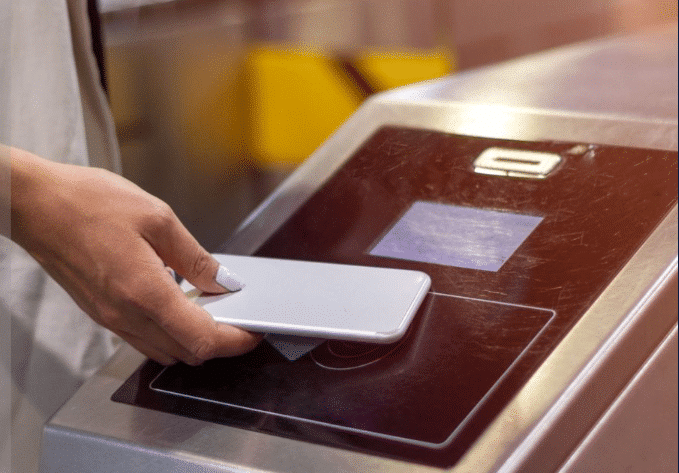April 12, 2021

Interest in and adoption of contactless payment systems have been growing in recent years due to the added efficiency, convenience, and security that these systems offer and continued technological advancement. Transit agencies across the nation and globe have added payment options that can be tapped or scanned for access to transit service. As new options and applications for increasingly dynamic and integrated payment gain traction – such as open-loop payment systems and mobile payment platforms – there are opportunities to potentially make transit payment, trip chaining, and travel simpler and more seamless.
Here are five key things you should know about contactless payment:
- What is contactless payment?
At a basic level, contactless payment is a transaction that occurs between a customer’s payment device and the business payment terminal. It can be as simple as a metro card that is scanned at the entry turnstile or take a more digital form, like payment via smartphone app. Generally, contactless payment systems use radio frequency identification (RFID) or near field communication (NFC) technology on the business end.
- How do these systems work?
Contactless payment systems can be open-loop or closed-loop. Closed-loop systems – which transit systems often use – are linked to a specific business or service, are pre-loaded with funds, and limit use to specific deployment use-cases, such as a city’s transportation system or a highway’s tolling system. These systems are relatively secure and allow businesses to access and analyze specific user data, relative to open systems more directly.
Open-loop systems can link directly to the user’s debit or credit card. Common applications of open-loop systems include Apple Pay and Google Pay. These systems offer more flexibility than closed-loop systems because they can be used across a variety of applications and vendors. As open-loop systems continue to grow in popularity, there may be more integration in the transportation space.
- What types of contactless payment systems are being deployed in the transportation sector?
The California Department of Transportation (CalTrans), for example, started a program called the California Integrated Travel Project (Cal-ITP). Cal-ITP offers open-loop, contactless payment options to smaller transportation systems in the state. CalTrans is using the lessons learned from these pilots to help improve the transportation systems across the state.
As another example, the New York City, the Metropolitan Transportation Authority (MTA) developed a contactless payment system called OMNY that now operates throughout the five boroughs. The installations were completed by the end of 2020 and in January 2021, 10% of riders were already using the new system.
These are just a couple examples of emerging initiatives to transform transportation payment.
- What are the benefits and drawbacks of contactless payment systems?
Generally, contactless payment systems offer a variety of benefits, including increased convenience, security against duplication, fewer touch points (particularly important in the time of COVID-19), faster fare processing than traditional cash payment or paper fare card systems, a lower carbon footprint, and increased fare model flexibility.
Open-loop systems also have additional benefits when it comes to transportation: allowing users to select their own fare format (such as a credit card or smart phone), reduced costs when compared to the cost of managing a closed-loop system, increased convenience for users by reducing the need for carrying additional cards or cash, utilization of data by transit agencies to identify larger transit trends, and more opportunity for integration with different transportation modes and services.
There are also challenges with implementing and operating contactless payment systems. While RFID cards are generally more secure than magnetic strip cards, if there is an RFID chip reader within range, the cards in a user’s wallet could be identified if they are not stored in an RFID-blocking sleeve. Other challenges to consider when implementing contactless payment systems are equity and accessibility. For users who are unbanked and/or do not have access to a smartphone, for instance, these payment systems can potentially be inaccessible. When deploying new systems, it is important to make sure options are accessible to the full range of travelers.
- What comes next?
Across the transportation world, there is a desire to move toward increasingly integrated, seamless options for mobility-related payment and trip planning, while ensuring that transit systems remain accessible to all users. A Grandview Research report estimates that contactless payments will see a compound annual growth rate of 20% through 2028 and, by 2025, it is projected that 18.7 billion contactless fare payments will be made annually.
To learn more about contactless payment deployments and how these systems are changing the transportation landscape, check out ITS America’s latest issue of ITS Insider.

Brenna Rivett is the Policy Programs Manager at ITS America.
Contact her at brivett@itsa.org

